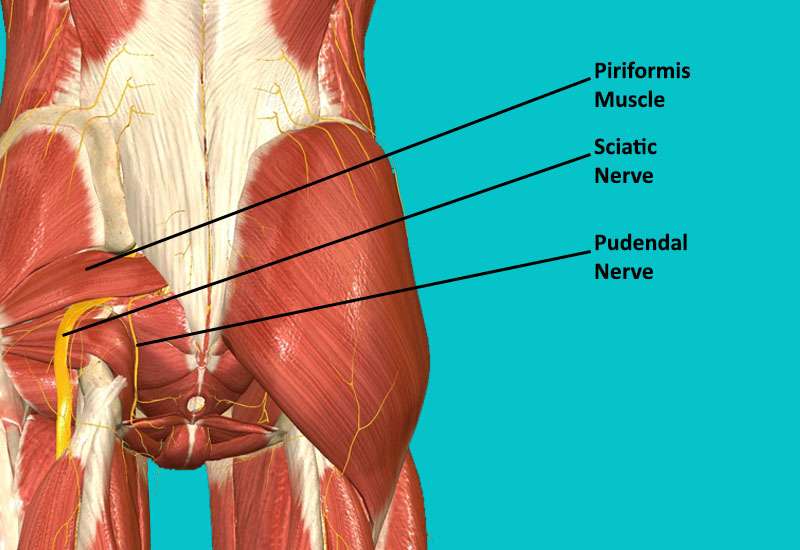Pudendal neuralgia is a chronic and often debilitating condition that affects the pudendal nerve, which is a nerve responsible for transmitting signals between the genital area, rectum and brain. This article is intended to provide a comprehensive overview of pudendal neuralgia, including its definition, causes, diagnosis and available treatment options.
The pudendal nerve, a vital component of the pelvic neural network, plays a major role in transmitting sensory signals from the genital and anal areas to the brain and in regulating the associated muscles. Pudendal neuralgia is a chronic pelvic pain condition caused by irritation or damage to the pudendal nerve, which runs from the back of the pelvis to the genital area, including the anus, vagina and penis.

Symptoms of pudendal neuralgia include stabbing, burning or shooting pain in the buttocks, perineum and genital area. People may also experience pain in the clitoris, labia, vagina, penis, scrotum, anus or rectum, difficulty or pain during sexual intercourse, problems such as urgency, frequency or difficulty with bowel movements. Other symptoms may include numbness, pins and needles, and increased sensitivity to pain. The pain may develop gradually or suddenly, be constant but worse at times, and improve when standing or lying down. It is usually worse when sitting down.
Pudendal neuralgia can be caused by a number of factors, including direct injury or trauma to the pudendal nerve, compression of the nerve due to prolonged sitting, tumours, cycling, childbirth, inflammation or infection in the surrounding tissues. In addition, underlying conditions such as pelvic floor dysfunction and nerve entrapment can contribute to the development of pudendal neuralgia.
Diagnosing pudendal neuralgia can be challenging because its symptoms can overlap with other pelvic pain conditions. Healthcare professionals often rely on a combination of history, physical examination and diagnostic tests to accurately identify pudendal neuralgia. Electromyography (EMG), nerve conduction studies, and imaging tests such as MRI or CT scans may be used to assess the condition of the pudendal nerve and surrounding structures.
Effective treatment of pudendal neuralgia requires a multidisciplinary approach that addresses both the underlying causes and the associated symptoms. Understanding the symptoms is crucial in determining the appropriate course of action.
Physical therapy: Physical therapy, including perianal TENS, relaxation exercises, biofeedback and pelvic floor exercises, may be used to improve symptoms. . The addition of TENS to physical therapy has been shown to improve outcomes.
Medications: Painkillers, anti-inflammatories and nerve-stabilising medications may be prescribed to relieve symptoms.
Nerve blocks: Pudendal nerve blocks, which involve injections of local anaesthetic and steroid medication, may provide relief for a few months.
Pulsed radiofrequency ablation: Pulsed radiofrequency ablation has been used as an alternative to therapeutic pudendal nerve blocks and standard radiofrequency ablation. Studies have reported significant pain relief in a high percentage of patients treated with pulsed radiofrequency.
Botox injections: Botulinum toxin injections to relax the pelvic floor muscles and reduce pain.
Decompression surgery: Surgery to relieve pressure on the pudendal nerve.
Neuromodulation: Implantation of devices that modulate nerve activity to reduce pain signals.
CBT may be recommended for patients whose psychological effects are contributing to their chronic pain.
Avoiding triggers: Identifying and avoiding activities that aggravate symptoms, such as prolonged sitting or cycling, and using therapeutic seat cushions.
Pelvic floor exercises: Strengthening exercises to improve pelvic muscle function and reduce pressure on the pudendal nerve.
Coping with pudendal neuralgia can be challenging, but a thorough understanding of the condition and its treatment options can empower individuals to seek appropriate care. If you or someone you know is experiencing symptoms consistent with pudendal neuralgia, it is important to consult a healthcare professional for an accurate diagnosis and personalised treatment plan. Remember that management of pudendal neuralgia often involves a combination of conservative and interventional therapies to improve overall quality of life.